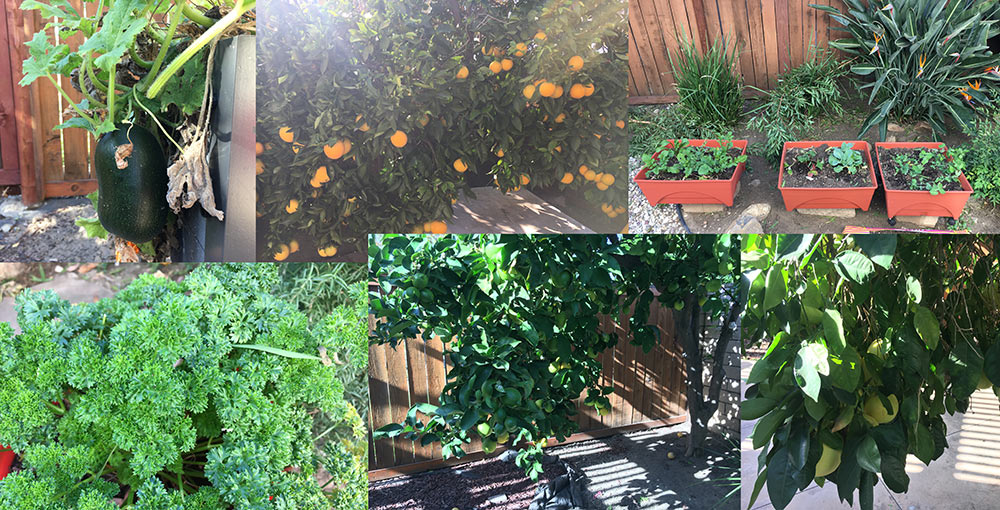Please grill me. Tell me if I’m wrong about something, or if there’s a better alternative, OR if there is something I should add to this list. Thanks in advance!
In no particular order, here they are:
1. Buy Used
A sh*t ton of stuff has already been produced. Computers, stools, tables, clothes, toys, you name it. The carbon footprint for these products already exists. So why create the demand to start that carbon footprint process all over again?
And if you buy something used that’s local, you’re going to be putting money directly in the hands of an individual in your local community. I really think that’s a powerful economic event.
Oh – I ONLY buy used cars. Brand new cars take a huge amount of energy and water to manufacture.
2. Have Trees Planted for $1 Each (and get a tax deduction)
I have my company buy trees every year. In 2020 we bought 100 trees. In 2021, we bought 1,000 trees. We go through One Tree Planted. It’s super easy.
If you’re an individual or a corporation, you can buy trees through One Tree Planted and receive a tax deduction. To me, this makes it a no-brainer.
Some say having a tree planted can absorb 48 pounds of carbon dioxide a year (depending on the type of tree).
3. Buy Renewable Energy Certificates (RECs)
This is an option for people who rent and can’t have solar panel’s put on their domicile. Some people say that renewable energy certificates are a scam. I’ve talked to people in the energy business and they said that by buying RECs you are helping by creating a demand for renewables.
I use Arcadia Power. It’s an extra $5 on top of my already inexpensive energy bill.
4. Try Not To Fly That Much
This one might be the hardest for a lot of people. Because it effectively means you should travel less. Meaning less exotic and far away vacations – killing one’s bucket list. That’s why we should all demand the airline industry to use synthetic fuels that are carbon neutral.
It’s possible to make fuel using renewable or nuclear energy that has a near carbon neutral footprint. You can pull carbon from the air to create almost any hydrocarbon you want.
5. Grow Some Of Your Food
All the food at your grocery store has a carbon footprint attached to it. It takes energy to grow, ship and package food.
If you can grow 10% of your food, that’ll help. Plus you’ll be eating much healthier. For people who live in California, you’d be surprised at how much food you can grow year round. Right now I have grapefruit, lemons, oranges, squash, tomatoes, eggplant, peas, cabbage, lettuce, parsley, basil, strawberries, various peppers and arugula going in the backyard.

This place grows food really easily. Almost no work required. Just have to water a little every day.
Additionally, if I take a walk in my neighborhood I can grab pomegranate, tangerines, mangos, loquats, acorns (my mother in law makes a dish called “muk” out of them), persimmons, avocados, guavas and other various treats. A lot of this free produce falls to the ground and rots. It’s ridiculous.
For those of you that live in apartments or don’t have any outdoor space, I thought about you because I’ve been there myself. Here are some ideas:
- Join a community garden – Be sure to follow the Gangsta Gardener!
- Anarchy garden – there’s spots around town that have open space. You can start a little garden in these spots. You’ll have to keep the pests in mind when you do this.

Plenty of open space out there for urban / suburban gardens. If you look closely to the right there’s an orange tree hanging over the fence. Free oranges!
And! You don’t forget you can grow food from scraps!
6. Buy Locally Made / High Quality Products
Quality products last longer. And if you can get products made nearby, you may be cutting down on the carbon footprint of shipping goods across the ocean. Plus you’re helping to keep businesses going locally.
7. Get In The Habit Of Turning Off Lights
In 2018 I had an electrician do some work on our house. While he was at it, I had him change out all the light bulb for super efficient bulbs. Within about a year and a half the savings from the reduced power load we were pulling paid for itself. Now we’re usually doing a lot better than our neighbors in terms of power usage.

I’ve made it a habit to turn off all the lights in the house in rooms where no one is in. It’s so easy for a bathroom light to be left on for HOURS. Or a closet light. Or a den light. Just turn them off as you make your rounds.
8. Hang Dry Your Clothes
Dryers are huge energy wasters. If you live in the Southwest or even Pacific Northwest (these days), hang drying is a great option.
If I wash clothes when I get home from the office, they’re usually dry the next morning. Even jeans. It also extends the life of your garments.
Santa Ana winds have arrived. Check that drop in humidity pic.twitter.com/ZVAJWTCk9O
— Jesper Joergensen (@jesperfj) November 25, 2021
30 mins should do it
— Jesper Joergensen (@jesperfj) November 25, 2021
9. Reduce Your Car Trips Per Week
Pre-COVID I would walk to the grocery store a few times a week. It served two purposes: 1 it was exercise, 2 I was cutting down on a car trip. NO ONE in my city does this from what I can tell. I’m the only one walking around with a stroller full of grocery items in my hood!
10. Use A Water Heater Blanket
This is a simple thing that has quite an impact. By wrapping your water heater with an insulated blanket, you can save up to 16% on water heating costs annually. You can use that number to figure out how much energy you save and how much carbon dioxide you’re preventing from getting into the atmosphere.
Share This Content:
